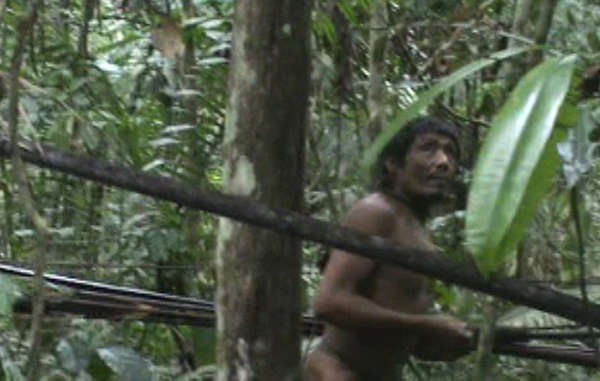
by Deep Green Resistance News Service | Apr 11, 2017 | Colonialism & Conquest
Featured image: The last of the Kawahiva are forced to live on the run. Still image from unique footage taken by government agents during a chance encounter. © FUNAI
by Survival International
Survival International has learned that politicians from a notoriously violent town in Brazil are lobbying behind the scenes to open up the territory of a vulnerable uncontacted tribe.
Councilors from Colniza in central Brazil, which is dominated by illegal logging and ranching and for years was Brazil’s most violent town, have met the Minister of Justice to lobby for the Rio Pardo indigenous territory to be drastically reduced in size. The minister is reportedly sympathetic to the councilors’ proposals.
Their plan is for road-builders, loggers, ranchers and soya farmers to move in, despite the territory being home to the last of the Kawahiva tribe, one of the most vulnerable peoples on the planet.
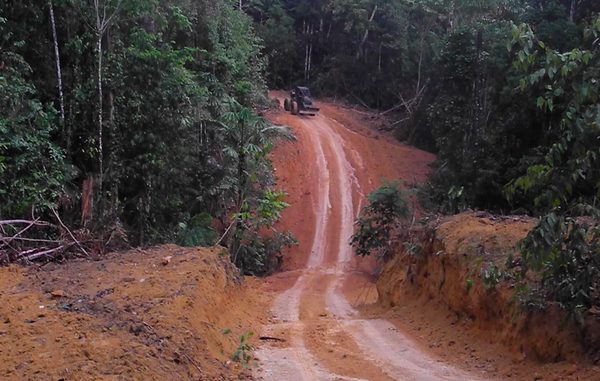
Armed loggers and powerful ranchers are razing the Kawahiva’s forest to the ground. © FUNAI
The Kawahiva depend entirely on the rainforest for survival, and have been on the run from loggers and other invaders for years.
The Rio Pardo territory was only recognized in 2016, following a global campaign by Survival International and pressure within Brazil.
Thousands of Survival supporters contacted the then-Minister of Justice demanding action. Oscar-winning actor and Survival ambassador Sir Mark Rylance fronted a major media push, culminating in the signing of the decree that should have secured the Indians’ territory for good.
Now, however, vested interests in the region could undo much of that progress.
Survival’s Director Stephen Corry said: “Brazil must respect the rights of its tribal peoples. Uncontacted peoples, like the Kawahiva, clearly want to be left alone and to live as they please. But Brazil’s current leaders are holding closed-door meetings with corrupt politicians, and kowtowing to the agribusiness lobby, expressly to deny them that right. The stakes could not be higher – entire peoples are facing genocide as a result of this callous approach.”
Background briefing
The Kawahiva are hunter-gatherers, who migrate from camp to camp through the Rio Pardo rainforest.
Roads, ranches and logging all risk exposing them to violence from outsiders who steal their lands and resources, and to diseases like flu and measles to which they have no resistance.
All uncontacted tribal peoples face catastrophe unless their land is protected. Survival International is leading the global fight to secure their land for them, and to give them the chance to determine their own futures.
The current Brazilian government is attempting to roll back decades of gradual progress in the recognition of indigenous peoples’ rights in the country. The Minister of Justice recently said: “Enough of all this talk of land [demarcation] – land doesn’t fill anyone’s stomach.” And the new head of Indigenous Affairs Department FUNAI has said “Indians can’t be ‘fixed in time.’”
by Deep Green Resistance News Service | Mar 30, 2017 | Colonialism & Conquest
Featured image: Dozens of people have been shot on sight by park guards in Kaziranga, including severely disabled tribal man Gaonbura Killing. © BBC
by Survival International
Survival International has called on the UN expert on extrajudicial executions to condemn shoot on sight conservation policies.
In a letter to the Special Rapporteur charged with the issue, Survival stated that “shoot on sight policies directly affect tribal people who live in or adjacent to ‘protected areas’… particularly when park guards so often fail to distinguish subsistence hunters from commercial poachers.”
The letter adds that “nobody knows when wildlife officers are permitted to use lethal force against [suspected poachers], and it is impossible for dependents to hold to account officers whom they believe to have killed without good reason. Many countries have gone further, and granted wildlife officers immunity from prosecution.”
The letter cites Kaziranga National Park in India as an especially striking example of the tactic. According to a recent BBC report, an estimated 106 people have been extrajudicially executed there in the last 20 years, including one disabled tribal man who had wandered over the park boundary to retrieve cattle.
Kaziranga guards have effective legal immunity from prosecution, and have admitted that they are instructed to shoot poaching suspects on sight. This has had serious consequences for tribal peoples living around the park. In June 2016, a seven-year-old tribal boy was shot and maimed for life by guards.
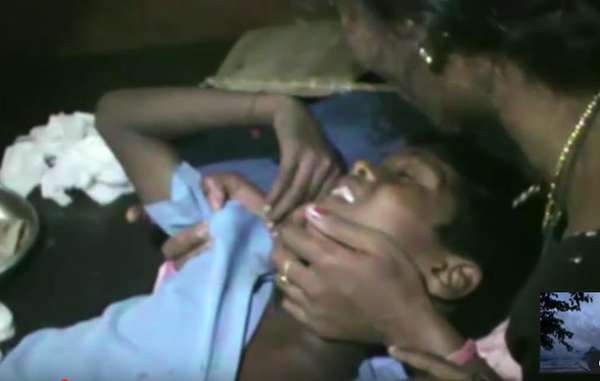
Akash Orang is comforted by his mother after being shot by a park guard. He is now severely disabled. © BBC
Similar policies are used in other parts of the world, notably Kenya, Tanzania and Botswana, among other African countries.
Speaking about his own anti-poaching work in Africa, poaching expert Rory Young from the organization Chengeta said: ”Shoot on sight is stupid. If we had been shooting on sight during this latest sting operation we would have shot a handful of poachers and that would have been the end of it. Every single poacher is an opportunity for information to get more poachers and work your way up the chain to the ringleaders.”
Survival has asked the Special Rapporteur to clarify that shoot on sight violates fundamental rights enshrined in the UN’s Civil and Political Rights Covenant and other international conventions. It also urges the UN to enquire about the policy with the Indian government, and the government of Assam state, where Kaziranga is located.
Shoot on sight is justified on the grounds that it helps to deter poachers. However, there have been several recent cases of guards and officials at Kaziranga being arrested for involvement in the illegal wildlife trade themselves.
Survival International is leading the fight against these abuses, and calling for a new conservation model that respects tribal peoples. Targeting tribal people diverts action away from tackling the true poachers – criminals conspiring with corrupt officials. Targeting tribal people harms conservation.
Survival’s Director Stephen Corry said: “If any other industry was guilty of this level of human rights abuses, there would be an international outcry. Why the silence when conservationists are involved? Torture and extrajudical killing is never justified – the law is clear on this. Some people think that the death of innocents is justified, that ‘collateral damage’ is necessary in the fight against poaching. We ask them, where is your humanity? Of course, there’s a racist element at play here: Shoot on sight policies would be unthinkable in North America or Europe.”
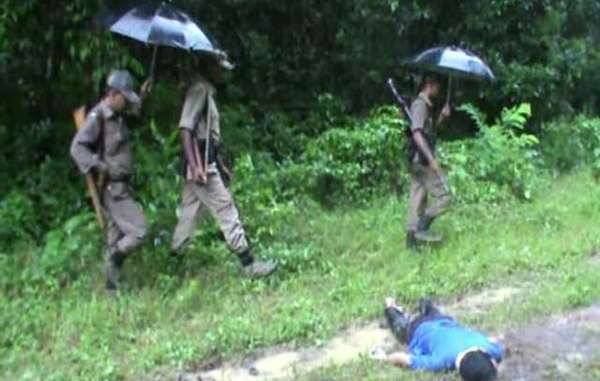
by Deep Green Resistance News Service | Feb 16, 2017 | Colonialism & Conquest
Featured image: Kaziranga park guards are heavily armed and instructed to shoot intruders on sight. © Survival International
by Survival International
A BBC investigation has revealed that tribal peoples living around a national park in India are facing arrest and beatings, torture and death under the Park’s notorious “shoot-on-sight” policy.
The report for television, radio and the BBC news website featured interviews with park guards, tribal people who have been affected by the policy in Kaziranga National Park, and a spokesman from WWF-India, which helps fund, train and equip park guards and advertises tours of the park through its website.
The park gets over 170,000 visitors each year. Fifty suspects were extrajudicially executed there in the last three years, and a severely disabled tribal man was shot dead in 2013. The BBC has estimated that 106 have been killed in the last 20 years. In the same period, only one official has been killed.
The BBC interviewed one local man who had been beaten and tortured with electric shocks during a detention by park officials before they realized he had no involvement in poaching.
The program also featured Akash Orang, a seven-year-old tribal boy who was shot in the legs by park guards last July. Akash said that: “The forest guards suddenly shot me” as he was on his way to a local shop. His father said: “He’s changed. He used to be cheerful. He isn’t any more. In the night, he wakes up in pain and he cries for his mother.”
Park guards have effective immunity from prosecution and are encouraged to shoot suspects on sight – without arrest or trial, or any evidence that they might have been involved in poaching. One guard admitted that they are: “Fully ordered to shoot them, whenever you see the poachers or any people during night-time we are ordered to shoot them.”
WWF has provided equipment – including what the BBC calls “night vision goggles” – which have been used in night-time operations and “combat and ambush” training. When asked by the BBC how donors might feel about their money being used to enforce this brutal treatment, WWF India’s spokesman said that: “What is needed is on-ground protection… We want to reduce poaching and the idea is to reduce it with involving other partners.”
Survival International is leading the global fight against these abuses and first brought the park’s high death toll and serious instances of corruption among Kaziranga officials – including involvement in the illegal wildlife trade they are employed to stop – to global attention in 2016.
Survival’s Director Stephen Corry said: “Conservation organizations, including WWF, are supporting a model of conservation which is resulting in gross human rights abuses. They have failed to condemn policies that are leading to widespread extrajudicial executions. For too long, conservation has relied on its positive public image to hide its horrific and sustained attacks on indigenous and tribal peoples’ rights. We’re working to stop this. It’s time for conservationists to work with tribal people, the best conservationists and guardians of the natural world. It’s time for conservation organisations to call for an end to shoot on sight policies.”
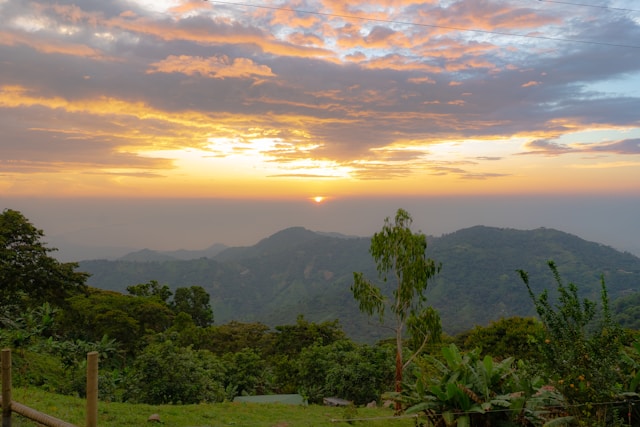
by Deep Green Resistance News Service | Feb 11, 2017 | Colonialism & Conquest, NEWS, Repression at Home
The Sierra Nevada de Santa Marta is a unique pyramid-shaped mountain on the northern tip of the Andes in northern Colombia. On its slopes live four separate but related peoples: the Arhuaco (or Ika), Wiwa, Kogi, and Kankuamo. Together they number more than 30,000.
The mountain’s peak is over 5,000m high. Rising from the shores of the Caribbean, the lower plains are clad in tropical forest, turning to open savannah and cloud forest higher up.
To the Indians, the Sierra Nevada is the heart of the world. It is surrounded by an invisible ‘black-line’ that encompasses the sacred sites of their ancestors and demarcates their territory.
by Survival International
Yoryanis Isabel Bernal Varela, 43, was a leader of the Wiwa tribe and a campaigner for both indigenous and women’s rights.
The Wiwa are one of four tribes that live on the Sierra Nevada de Santa Marta, a unique pyramid-shaped mountain in northern Colombia. The Sierra Nevada Indians believe it is their responsibility to maintain the balance of the universe.
Bernal Varela is the latest victim in a long line of attacks against Sierra Nevada leaders, who have been at the forefront of the indigenous movement in South America. Many Indians have been killed by drug gangs, left-wing guerrillas and the army.
In November 2012 Rogelio Mejía, the leader of one of the other Sierra Nevada tribes, the Arhuaco, narrowly escaped an assassination attempt.
José Gregorio Rodríguez, secretary of the Wiwa Golkuche organization, stated: “Indigenous people are being threatened and intimidated. Today they murdered our comrade and violated our rights. Our other leaders must be protected.”
The problem is not limited to Colombia. Indigenous activists throughout Latin America are being murdered for campaigning against the theft of their lands and resources. The murderers are seldom brought to justice.
In January, Mexican Tarahumara indigenous leader Isidro Ballenero López was killed. In 2005 he had received the prestigious Goldman prize for his fight against illegal deforestation.
Photo by Denise Leisner on Unsplash

by Deep Green Resistance News Service | Feb 10, 2017 | Colonialism & Conquest
by Henry Geddes and Martin Valdiviezo /
translated by Angélica Almazán / Intercontinental Cry
Long before it was used by early European settlers to establish the Massachusetts Bay Company–and later, the Massachusetts Bay Colony–the term “Massachusetts” referred to an Algonquian-speaking nation known as the Massachuset. One of dozens of smaller nations that made up the Wampanoag Nation, the Massachuset lived in what is now the eastern side of the Commonwealth of Massachusetts, a region that includes the City of Boston. The name “Massachuset” means “At or about the great hill” in the Algonquian language.
The Massachuset’s territory was home to numerous hills and stone structures that lent themselves to burial mounds, ceremonial sites and other religious practices. While many of these sites were undoubtedly lost to the ravages of colonialism, the legacy of the Massachuset invariably remains in the land itself. And so too that of other indigenous nations inhabiting the surrounding area.
Massachusetts–the U.S. state–is home to another legacy. It is the site of the first wave of European colonization that resulted in the decimation of First Nations in North America. While the Massachuset disappeared by 1800, the Mohegan, the Mohican and the greater Wampanoag Nation endured. Efforts such as the modern tradition of “Thanksgiving” have nevertheless obscured the violent nature of the encounter. Even now, Indigenous Peoples continue to struggle for their territorial and cultural rights across the breadth of the U.S. landscape, as the Sioux at Standing Rock can attest in their struggle against the oil pipeline project in North Dakota.
There is another chapter of this struggle currently playing out in the Western Massachusetts town of Shutesbury. Lake Street Development Partners LLC wants to build a 6-megawatt power plant, euphemistically labelled as the Wheelock Tract ‘Solar Farm’ Project to veil an otherwise ecologically disastrous initiative to clear 28.6 acres of healthy forest where the Mohican Peoples claim to have cemeteries and other ceremonial sites.
The Shutesbury Planning Board approved this project in June 2016 even though members of the Narragansett and Wampanoag tribes had previously expressed their concern for an enterprise that would potentially undermine their cultural property rights.
Currently, the project has been stopped by a court order initiated by an individual of Mohawk ancestry to start an investigation that allows Narragansett and Wampanoag representatives with relevant expertise in identifying indigenous cultural property to confirm the existence of archaeological sites on the land in question.
The developers, Lake Street Corporation and the owners of the W.D. Cowls land, have so far refused to give indigenous representatives access to the location to confirm (or not) the presence of indigenous cultural property. The developers intend to enforce an archaeological report conducted by SWCA, an environmental consulting firm from Arizona. According to SWCA’s report, there are no ceremonial sites in the region.
SWCA came to this conclusion without having performed a sub-surface scan to determine if there are human remains.
The research that led to the report sparked controversy because of its lack of cultural and geographic context that might have been provided by qualified indigenous experts on local native cultures, a critique made by external reviewers that included several high profile archaeologists. The debate on the existence of indigenous archaeological remains is crucial to determine the legal foundations and the political instruments that can sustain the cultural property rights of First Nations in Massachusetts and beyond.
Besides the threat to the cultural property rights of the Mohican People, as well as the affront to biodiversity and carbon sequestration involved in clearing almost 30 acres of forest, preliminary research results in Great Britain and the U.S. regarding the actual ecological impact of industrial-scale solar arrays errs on the side of caution until the research is more conclusive.
Numerous oil and hydroelectric projects are ongoing causes for conflicts between energy corporations, Indigenous Peoples and environmental groups, since they involve the destruction or expropriation of ancestral remains and territories. Allegedly, the development of alternative energy projects (such as solar power) could reconcile the interests of these three parties. However, this case shows that solar power projects can have negative social and environmental consequences when designed to privilege capitalist and colonial private interests.
It is important to observe that this debate on the Shutesbury indigenous archaeological heritage is taking place in a context of huge structural inequalities marked by the long-term disregard for indigenous treaties and rights, one that has denigrated indigenous cultures and even denied that they still exist in states like Massachusetts. Such cultural subjugation is still being massively practiced through the statements of public officials and the Media, as well as in books, movies and educational programs that make Indigenous Peoples and their cultural heritage invisible. This is a manifestation of the political marginalization of Indigenous Peoples in Massachusetts that facilitates the appropriation of their legacy. Nevertheless, the recognition of the indigenous cultures in the U.S. and in the world is a fundamental topic of human rights, and it is crucial for the establishment of fair and inclusive democratic societies.
A common thread in the situation of our indigenous brothers in Anglo America and Latin America, from Canada to Chile, is the need to fight against the Eurocentric order to ensure their universal rights to territory, as well as respect for their cultural properties and rights to a dignified and peaceful life. To a greater or lesser extent, despite their democratic and sometimes multicultural or intercultural constitutions, these States continue to reproduce the colonial legacy. The decolonization of the Americas is as crucial for the recognition of our Indigenous Peoples as it is for the fulfillment of the democratic ideals of freedom, equality and solidarity within each one of its States. The stones on the great hills of Massachusetts do matter as sacred spaces and ceremonial sites for all Americans.
Henry Geddes: Associated Professor, Communication Department, University of Massachusetts-Amherst
Martín Valdiviezo: Postdoctoral Researcher. Communication Department, University of Massachusetts-Amherst, Assistant Professor. Education Department. Pontificia Universidad Católica del Perú
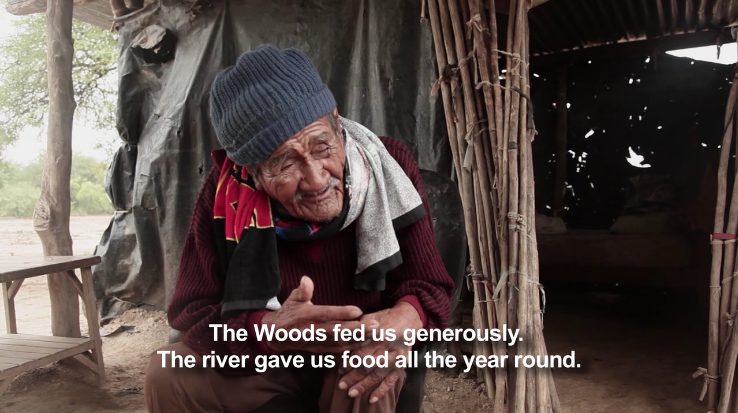
by Deep Green Resistance News Service | Feb 9, 2017 | Colonialism & Conquest
by Intercontinental Cry
“Na Sam” is a documentary film that sheds light on the modern Chorote way of life.
After being subjugated into a group of insecure land occupiers on their own land, the Chorote have arrived at a desperate pass.
Located in the central-western Chaco region of Argentina, the Chorote are witnessing the desertification of their homeland, widespread soil impoverishment and a loss of biodiversity stemming from indiscriminate felling of native forest and extensive cattle rearing enterprises
Industrial harm to the Pilcomayo River–a crucial source of fresh water and fish–has caused even more damage. The river now presents high levels of mercury contamination and other heavy metals due to spillages in the mining areas of neighboring countries.
Various other development plans, implemented on Chorote lands without consultation, have caused further alteration and degradation to areas of traditional use, leading to increased malnutrition and poverty and reduced access to fresh water.
Beneath this surface of harm, the Chorote are struggling now more than ever to maintain their language and traditions, and their cultural heritage, while adapting to this changing world.
Theirs is culture that is dueling to exist after generations of invisibility and oppression.







